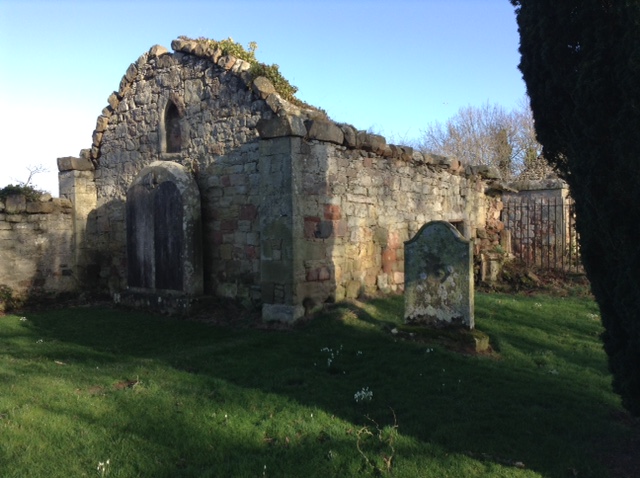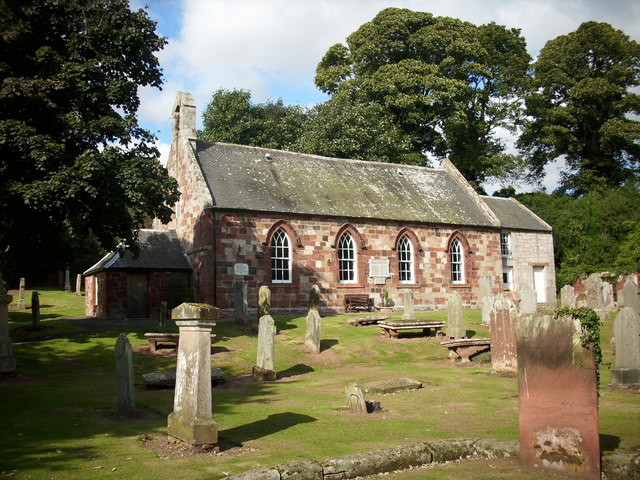While churches and cathedrals are among the most obvious markers and focal points of Christianity in Britain today, the impact of the Church spreads much further over the landscape. There are numerous churches within the study area – some in use today, others ruinous or almost impossible to detect – as well as traces of a handful of monastic granges (farms or estates associated with monasteries or other religious orders). Early Christian sites are less prolific, not least because the earliest monastic sites were constructed of timber so have either disintegrated or been replaced by more substantial stone structures. However, Cuthbert (bishop of Lindisfarne AD 685-AD 687) is believed to have been a shepherd in the Lammermuirs in his early years.
In the medieval period, the Church transformed agricultural practices. David I, King of Scotland from AD 1124-AD 1153, established over a dozen new monasteries during his reign and the Cistercian monasteries in particular (e.g. Melrose Abbey) and their associated granges resulted in enhanced agricultural production, partly through the introduction of monks, or lay-brothers, undertaking unpaid labour. Over time, southern Scotland and its monasteries became a key producer of wool for northern Europe.
There are records of a handful of medieval monastic granges in the Lammermuirs. Nunraw House is believed to have started life as a grange, although it has been much modified and added to in the centuries since. Penshiel Grange (‘Pensheel’ shown below, left, marked on Blaeu’s 17th century Atlas of Scotland), was attached to Melrose Abbey, some 19 miles to the south-west as the crow flies. The ruinous buildings are believed to date to the early 15th century but Penshiel is mentioned in a charter dating to AD 1200. Another grange is believed to have been located nearby at Spartleton, but no trace is visible on the ground today. A possible sheepcote (a long, narrow building used to house sheep during the winter months) was excavated in the Bothwell Water Valley as part of this project. Examples in England are known to have been associated with abbeys, and this site was perhaps attached to Kelso Abbey. You can read more about that here.
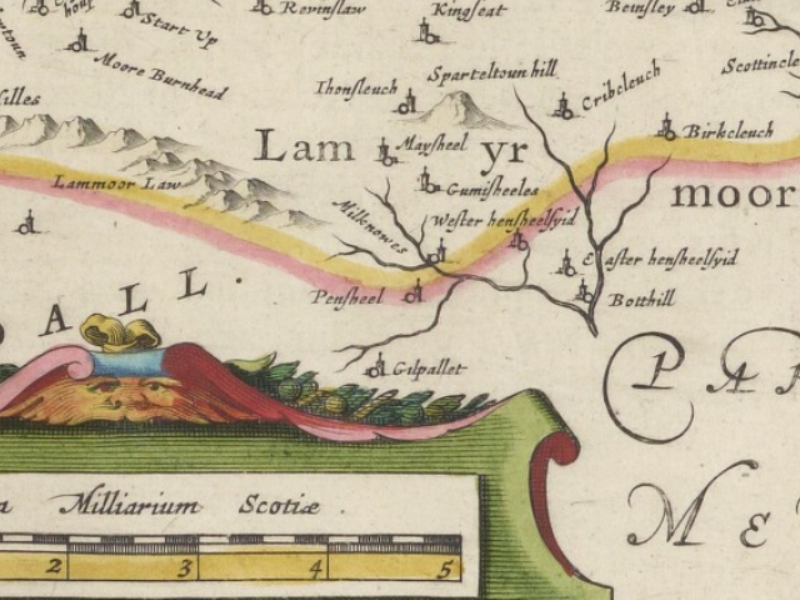
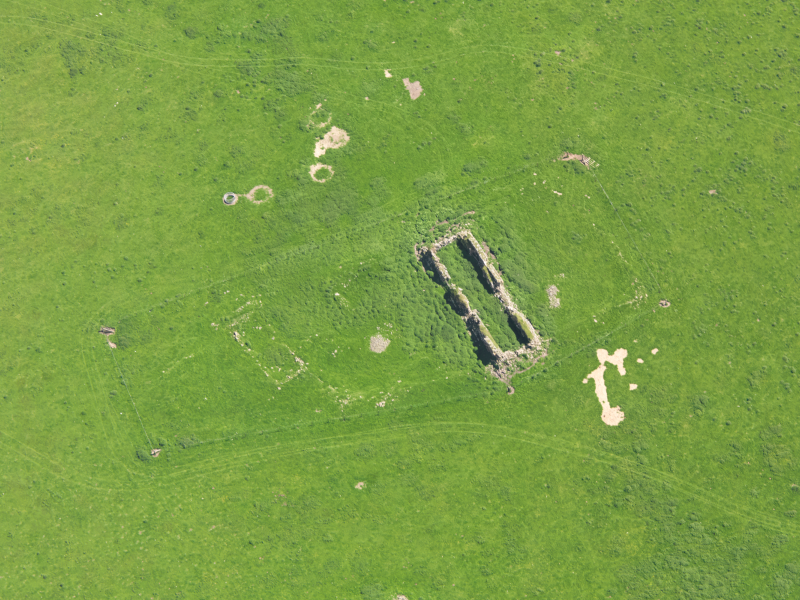
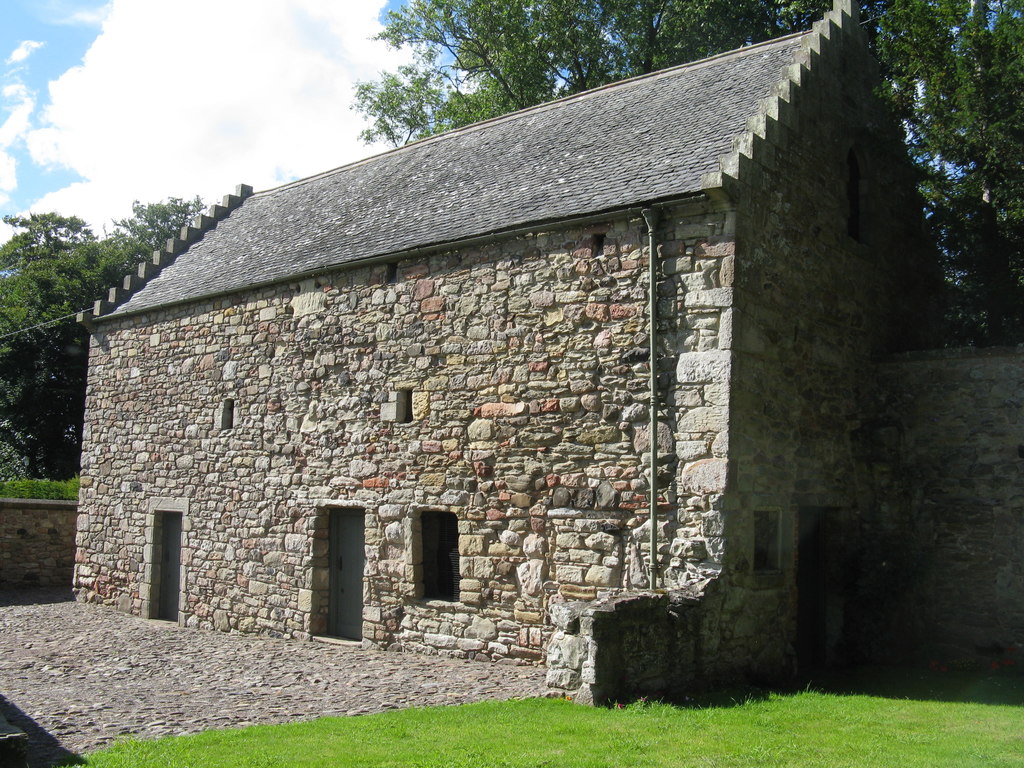
As well as the goods produced by monastic granges, the church also collected rent from its parishioners. Tithe barns existed to hold the 10% of their crops or livestock that parishioners were required to give to the church during the medieval period. There are only eight tithe barns listed in Historic Environment Scotland’s database of historic sites, and one possible example within our study area: Foulden Tithe Barn (above, right). It has been identified as a tithe barn because of its proximity to Foulden Kirk, but the present building is certainly not medieval in date. It has been suggested that traces of buildings to the east may represent an earlier barn.
Though many of the churches in use today are relatively recent in date, a glimpse of medieval masonry can be found at Garvald and Bara Parish Church, established in the late 12th century, but entirely remodelled in 1829. The decorative chip-carved string course along the north and west walls is believed to be 12th century, as is the stonework beneath the string course on the north wall.
Similarly, Preston Church is believed to have been constructed in the 12th century, although it saw much rebuilding and remodelling in the centuries afterwards, and is now ruinous. It went out of use in around 1718 when Bunkle Church became the parish church. Some of the burial markers are probably as early as 17th century in date.
